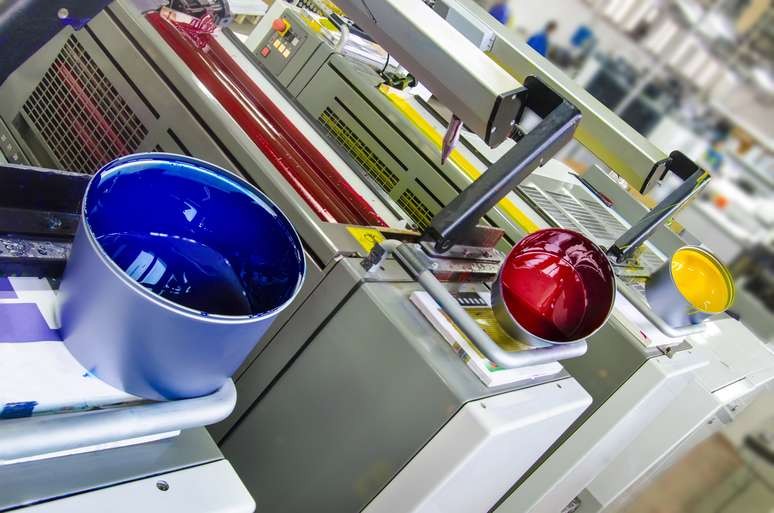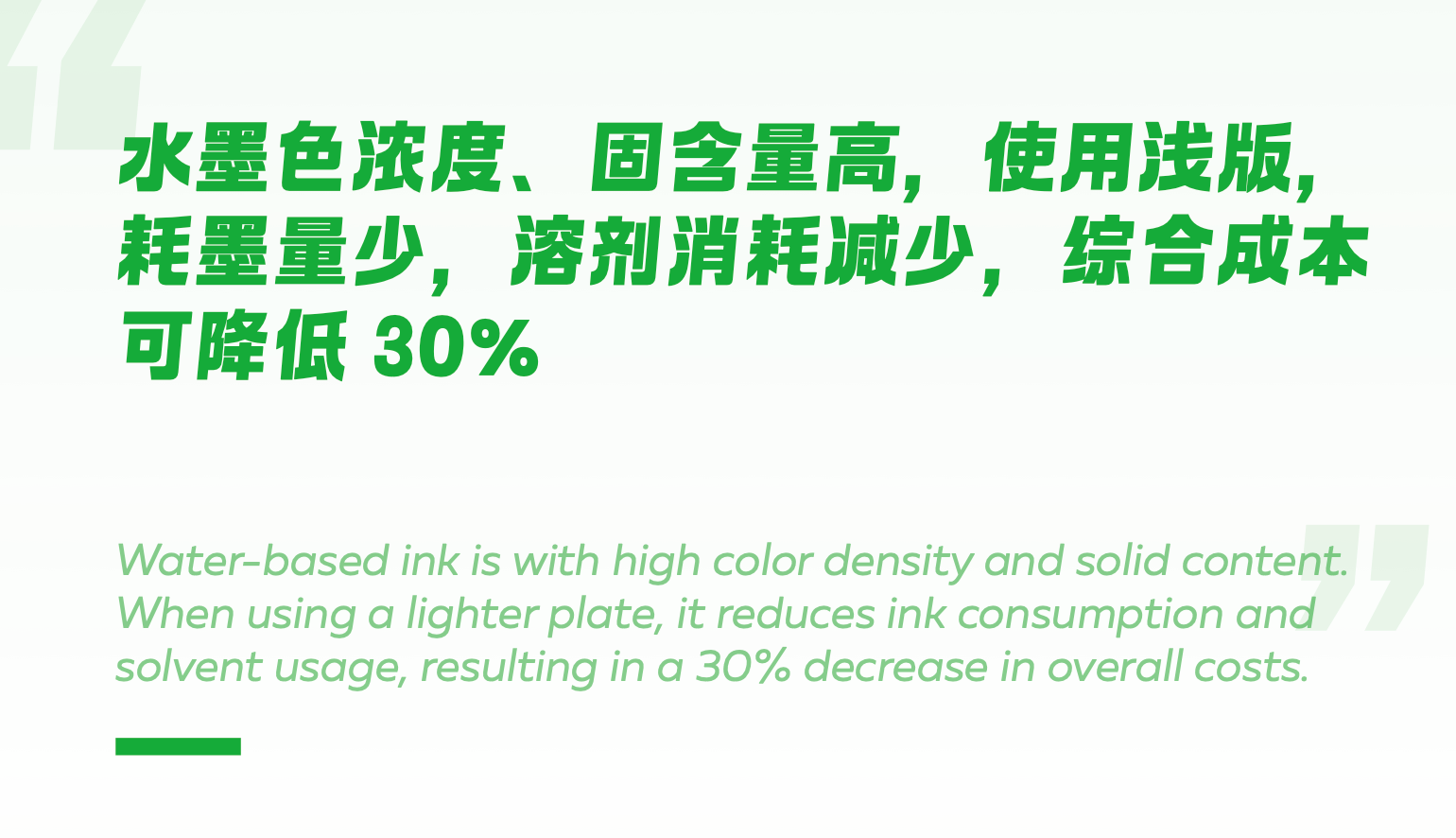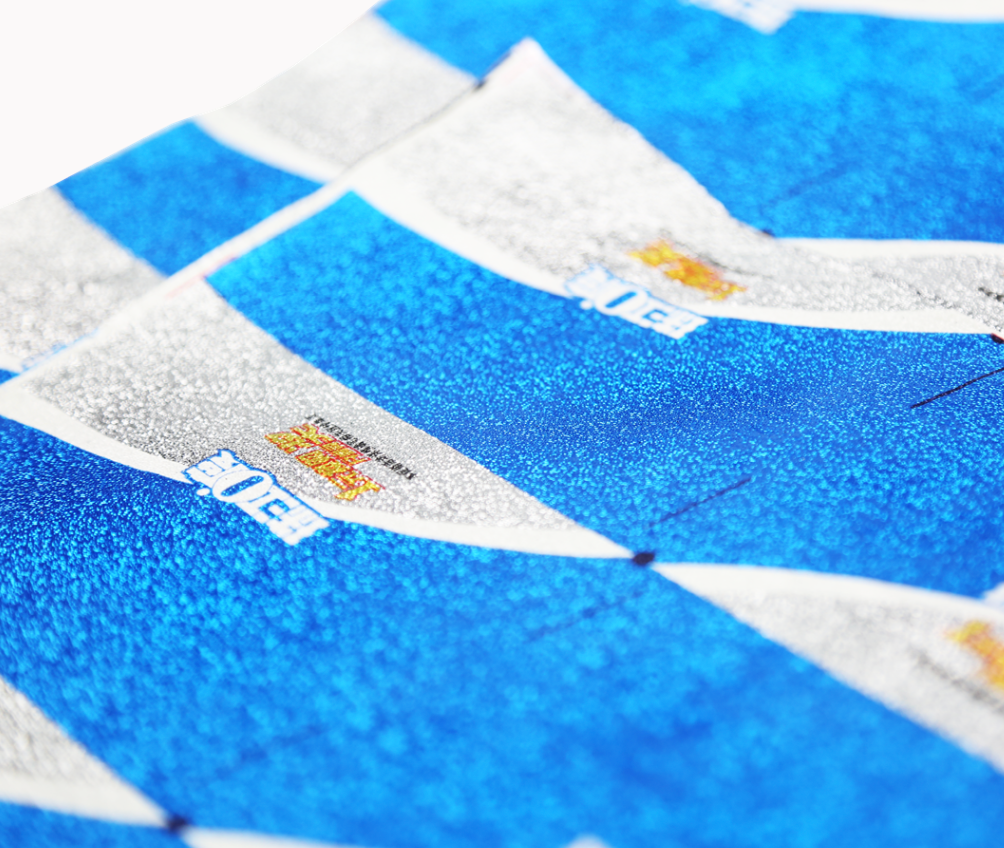Introduction

Water-based flexographic printing inks have been making waves in the ever-evolving world of printing. These inks have gained significant traction for their eco-friendly nature and exceptional print quality. As the demand for sustainable printing solutions continues to grow, water-based inks are revolutionizing the flexographic printing industry, offering a greener and more efficient alternative to traditional solvent-based inks.
The Rise of Water-based Flexographic Printing Inks
The rise of water-based flexographic printing inks can be attributed to the increasing awareness of environmental sustainability and the need for cleaner production processes. As businesses and consumers seek eco-friendly alternatives, these inks have become a game-changer in printmaking.
Water-based inks offer a wide range of benefits for flexographic printing, including their ability to produce vibrant and high-quality prints. These inks are known for their excellent color reproduction and ability to create sharp images. They are popular for businesses looking to make a lasting impression with their printed materials. Water-based inks are versatile and can be used on various substrates, providing flexibility for printers and designers.
Benefits of Water-based Inks for Flexographic Printing
Water-based inks are gaining traction in the flexographic printing industry for many reasons. They offer significant environmental and practical advantages over traditional solvent-based inks.
Here are some of the key benefits of using water-based inks for flexographic printing:
- Reduced Emissions: Water-based inks contain minimal to zero volatile organic compounds (VOCs). This significantly reduces air pollution and creates a healthier working environment.
- Improved Worker Safety: Since they lack harmful solvents, water-based inks pose less health risk to printers. This translates to fewer safety concerns and a more comfortable work environment.
- Vibrant Color Reproduction: Advancements in water-based ink technology now deliver excellent color quality, rivaling that of solvent-based inks.
- Easier Cleanup and Maintenance: Water-based inks are easier to wash up, reducing downtime and simplifying press cleaning. This translates to increased efficiency and cost savings.
- Reduced Risk of Clogging: Water-based inks are less likely to clog printing equipment, minimizing production interruptions and ensuring smoother operation.
By switching to water-based inks, flexographic printers can achieve high-quality results while minimizing their environmental impact and improving production efficiency.
Revolutionizing Flexographic Printing with Water-based Inks
With their ability to deliver exceptional print quality and meet stringent environmental regulations, water-based flexo printing inks are revolutionizing the industry. This revolutionary shift is paving the way for a more sustainable future while elevating standards for flexographic printing.
Water-based flexographic printing inks are revolutionizing the industry regarding environmental sustainability and print quality and opening up new opportunities for creative and innovative packaging designs. With the ability to produce vibrant and sharp colors, these inks allow brands to stand out on the shelf and capture consumer attention in a crowded marketplace. This shift towards water-based inks is not just a trend but a fundamental change that is reshaping how we think about packaging and printing.
Understanding Flexographic Printing Inks

Flexographic printing inks are specially formulated inks designed for use in flexographic printing, a popular method for high-volume printing. These inks are unique because they are specifically engineered to work with the flexible photopolymer plates used in flexo printing.
What Sets Flexographic Printing Inks Apart
Flexographic printing inks are unique in their ability to adhere to various substrates, including non-porous materials like plastic and metallic films. This versatility makes them ideal for packaging and label printing, where different materials require different ink adhesion properties.
Exploring the Advantages of Flexographic Printing
Flexographic printing offers a compelling combination of speed, versatility, and cost-effectiveness, making it a popular choice for various applications. Here are some of the key advantages of flexographic printing:
- High-Speed Production: Flexographic printing presses can run at very high speeds, efficiently producing large quantities of printed materials. This makes it ideal for businesses with high-volume printing needs.
- Substrate Versatility: Flexography can print on a broader range of substrates than other methods. These include non-porous materials like plastic film and foil and porous materials like paper and cardboard. This versatility makes it suitable for various printing applications, from packaging and labels to disposable products and wallpaper.
- Cost-Effectiveness: Flexographic printing offers a cost-effective solution for medium and high-volume printing runs. The plates used in flexography are relatively inexpensive and can last for millions of impressions. Additionally, the setup time for flexographic printing is minimal compared to other methods.
- High-Quality Printing: Modern flexographic printing presses can produce high-quality prints with vibrant colors and sharp images. This makes it a viable option for businesses that require high-quality packaging and labels to make their products stand out.
- Environmentally Friendly: Flexographic printing can be an environmentally friendly method, especially when water-based inks are used. These inks are more sustainable and pose fewer environmental risks than solvent-based ones used in other printing methods.
In conclusion, flexographic printing's speed, versatility, cost-effectiveness, high-quality output, and eco-friendly nature make it a valuable option for businesses across various industries.
The Importance of Ink for High-Quality Flexographic Printing
Ink plays a crucial role in achieving high-quality flexographic prints. The right ink formulation ensures that colors are consistent, vibrant, and long-lasting. It also determines how well the printed image adheres to the substrate, ultimately impacting the overall quality of the final product.
The type of ink used in flexographic printing can also impact the process's environmental sustainability. Water-based flexographic printing inks are known for their eco-friendly properties, as they contain fewer volatile organic compounds (VOCs) than solvent-based inks. This makes them a more environmentally responsible choice for businesses looking to reduce their carbon footprint and minimize their impact on the planet. Companies can demonstrate their commitment to sustainability by choosing water-based inks while still achieving high-quality flexographic prints.
The Superiority of Water-based Flexographic Printing Inks

Water-based flexographic printing inks have gained popularity due to their minimal environmental impact, making them a sustainable choice for printmaking. These inks are free from harmful chemicals and emit lower volatile organic compounds (VOCs), reducing air pollution and promoting a healthier work environment.
The Environmental Impact of Water-based Inks
Water-based inks significantly reduce the carbon footprint associated with flexographic printing. They are non-toxic and biodegradable, making them an eco-friendly alternative to traditional solvent-based inks. This aligns with the growing demand for sustainable printing practices in the industry.
Enhancing Printmaking with Water-based Flexo Printing
Water-based flexo printing offers enhanced color vibrancy and improved adhesion to various substrates, resulting in high-quality print outcomes. These inks provide greater flexibility for creating intricate designs and patterns, making them ideal for packaging and label printing on gravure printing machines.
Unleashing the Potential of Water-based Inks in Flexographic Printing
Water-based flexographic printing inks are versatile and can be used for a wide range of applications, from food packaging to pharmaceutical labels. Their ability to deliver sharp, crisp images with minimal odor makes them attractive for businesses looking to elevate their brand through visually appealing print materials.
Now that we've explored the environmental benefits and print quality enhancements offered by water-based flexographic printing inks, it's clear that these innovative solutions are revolutionizing the industry while promoting sustainability.
Advancements in Water-based Ink Technology

The Evolution of Water-Based Inks for Flexographic Printing
Water-based inks have come a long way in the world of flexographic printing, evolving to meet the demands of modern printmaking. With advancements in formulation and technology, water-based inks now offer improved color vibrancy, faster drying times, and enhanced print quality for flexo printing. Printers can now achieve exceptional results with water-based inks, making them a top choice for flexographic printing.
Breaking New Ground in Flexographic Printing with Water-based Ink
Introducing water-based ink has revolutionized the flexographic printing industry, breaking new ground by offering a more sustainable and environmentally friendly alternative to traditional solvent-based inks. Printers can now produce high-quality prints with reduced environmental impact, paving the way for a more eco-conscious approach to flexo printing. Water-based ink's versatility and performance drive printers to embrace this innovative solution for their printing needs.
Innovations Driving the Success of Water-based Flexographic Printing Inks
Innovations in water-based ink technology are propelling the success of flexographic printing inks to new heights. Developing advanced pigments, binders, and additives has resulted in water-based inks that deliver exceptional color accuracy, adhesion, and durability on various substrates. These innovations drive printers to adopt water-based flexo printing as their preferred choice for achieving outstanding results while prioritizing sustainability and quality.
Remember that innovation is key to advancements in water-based ink technology. By staying at the forefront of these developments, printers can ensure that they deliver superior print results while making environmentally conscious choices.
Enhancing Printing Quality with Water-based Inks

Water-based flexographic printing inks are the key to achieving superior print results. Their advanced formulation allows for vibrant and crisp printing, enhancing the overall quality of the final product. With water-based inks, flexographic printing reaches new heights of excellence, delivering unparalleled print clarity and precision.
Achieving Superior Print Results with Water-based Flexo Inks
Water-based flexographic printing inks produce high-quality prints that stand out with their sharpness and color vibrancy. Their unique properties allow smooth ink transfer onto various substrates, ensuring consistent and flawless print results every time. As a result, businesses can confidently deliver top-notch printed materials to their clients, setting new standards for excellence in the industry.
Elevating Printing Standards with Water-based Ink for Flexographic Printing
Water-based ink revolutionizes flexographic printing by elevating print quality and consistency standards. Its ability to adhere to different surfaces while maintaining exceptional color fidelity sets a new benchmark for printing excellence. With water-based inks, businesses can meet and exceed customer expectations, positioning themselves as leaders in delivering outstanding printed materials.
The Role of Water-based Ink in Elevating Flexographic Print Quality
Water-based inks are revolutionizing flexographic printing by enabling superior print quality. Here's how they achieve this:
- Enhanced Adhesion and Durability: Water-based inks bond more effectively with a broader range of substrates than solvent-based inks. This ensures that prints resist scratches, scuffs, and fading, even on flexible packaging materials.
- Sharper Details and Vibrant Colors: The unique properties of water-based inks allow for finer ink deposits, resulting in crisper lines and richer color reproduction. This translates to a more visually appealing and impactful final product.
Water-based inks are the future of flexographic printing. They combine environmental responsibility with exceptional print quality, empowering businesses to create packaging and labels that are both sustainable and visually stunning.
Remember always to choose water-based ink when you want your prints to stand out!
Embracing the Future of Flexographic Printing with Water-based Inks

The Growing Demand for Water-based Flexo Printing
As more businesses and consumers prioritize sustainability, the demand for water-based flexographic printing inks has significantly increased. This eco-friendly alternative to traditional solvent-based inks is gaining popularity due to its minimal environmental impact and high-quality results.
Navigating the Benefits of Water-based Inks in Flexographic Printing
Water-based inks offer a wide range of benefits for flexographic printing, including vibrant color reproduction, improved print quality, and faster drying times. These inks are also safer to handle and produce less waste, making them an attractive choice for printers looking to enhance their efficiency while reducing their environmental footprint.
Embracing Sustainability and Quality with Water-based Flexographic Printing Inks
By embracing water-based flexographic printing inks, businesses can also position themselves as leaders in their industry, demonstrating a forward-thinking approach to meeting the needs of both customers and the environment. This shift towards sustainability benefits the planet and enhances brand reputation and consumer perception. As more and more consumers prioritize eco-friendly products, businesses that adopt water-based inks can gain a competitive edge in the market.
Embrace Sustainability and Quality with Water-based Inks

The rise of water-based inks is undoubtedly shaping the future of flexographic printing. Focusing on sustainability and quality, water-based inks are revolutionizing the industry and leading the way towards a more environmentally friendly and efficient printing process. Embracing these inks means embracing a brighter, more innovative future for flexographic printing.
Embracing sustainability and quality with water-based inks is not just a trend; it's a necessity. As consumer demand for eco-friendly products grows, printers must adapt to meet these expectations. Water-based inks offer the perfect solution, providing high-quality results while minimizing environmental impact.
Unlocking the Potential of Water-based Inks in Flexographic Printing
The potential of water-based inks in flexographic printing is truly limitless. From enhancing printmaking processes to achieving superior print results, these inks are unlocking new possibilities for printers everywhere. By embracing this technology, printers can elevate their standards and set new benchmarks for excellence.
The Future of Flexographic Printing: Water-based Inks Leading the Way
The future of flexographic printing undeniably belongs to water-based inks. As advancements continue to drive innovation in ink technology, we can expect even greater breakthroughs that will further solidify water-based inks' position as industry leaders. Embracing this future means embracing progress and staying ahead of the curve.
As advancements continue to drive innovation in ink technology, we can expect even greater breakthroughs that will further solidify water-based inks' position as industry leaders. Embracing this future means embracing progress and staying ahead of the curve. With water-based inks leading the way, printers will be able to meet growing demands for sustainable and eco-friendly printing solutions. This shift towards water-based inks also opens up opportunities for improved print quality and color vibrancy, creating a win-win situation for printers and their clients.

